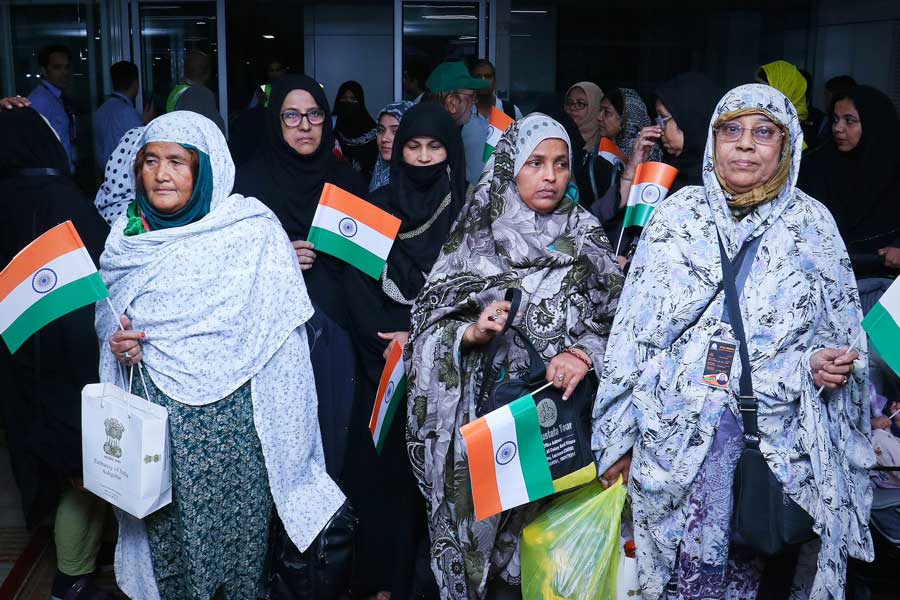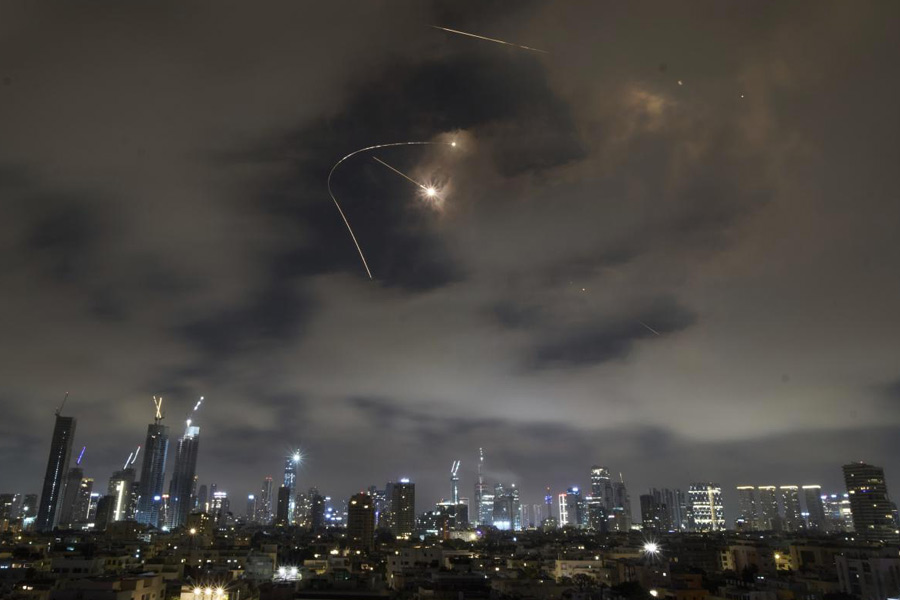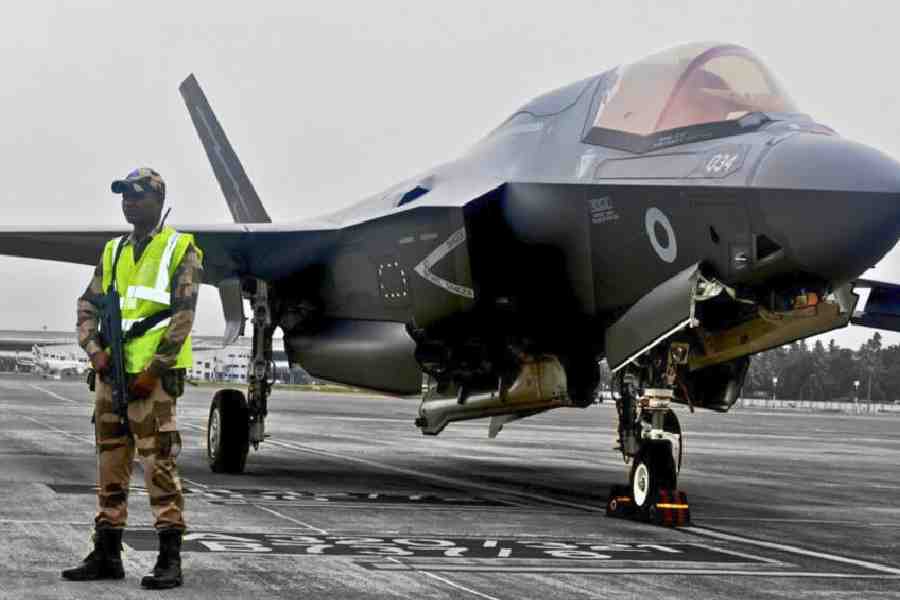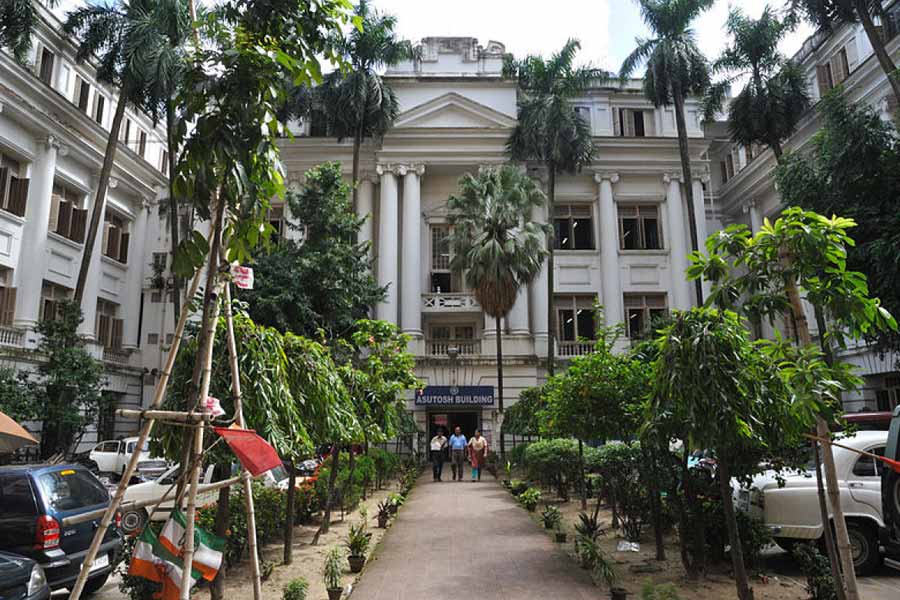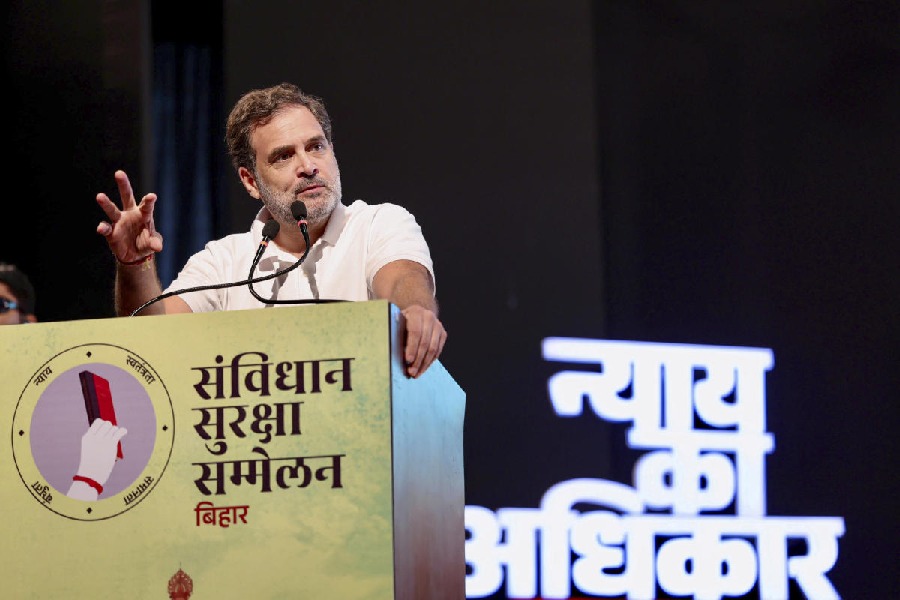 |
| Priests offer aarti at Sidhi Ghat at Sultanganj in Bhagalpur. Picture by Amit Kumar |
Sultanganj, Aug. 1: The town has been witnessing a unique puja in the evening for the past few days, all for a noble cause.
Just as dusk descends, hordes of saffron-clad kanwariyas (pilgrims) rush towards Sidhi Ghat followed by droves of residents. The shopkeepers too down their shutters to join the stream of people on the riverbank for Maha Ganga Aarti — a special ritual to worship the holy river organised by the district administration to discourage masses from polluting the river.
“Don’t delay, it’s time to rush to the riverbank. Close the shop for the time being,” ordered Shambu Kumar, a shop owner at Sultanganj market today before joining the human flow that was going towards the riverbank.
The atmosphere at Sidhi Ghat was electrifying — filled with blowing of conch shells and other musical instruments like drums. People queued up on the riverbank to watch the Maha Ganga Aarti. Chants of Har Har Mahadev, Ganga Maiyya ki jai rent the air and the reflection of lighted lamps in the hands of the pandas (priests) on the river water made an exquisite spectacle.
Taking cue from religious places like Hardwar or Varanasi, the district administration has started Maha Ganga Aarti every evening during the month-long Shravani Mela. “The Maha Aarti is being performed on the lines of the aarti at Hardwar and Varanasi but this event has its own significance here,” said Kamal Jaiswal, a marketing officer, who has been deputed here as a Shravani Mela officer.
Referring to mythology, Jaiswal said Ganga is called Uttarvahani in Sultanganj since it flows from the northern direction and holds religious significance. “Legendary saint Jannhu who lived here swallowed river Ganga when it was passing through the area. King Bhagiratha who persuaded goddess Ganga to flow to the earth from heaven had also faced the problem when saint Jannhu captured the river, which during its journey to Ganga Sagar, submerged his cottage at Sultanganj. After King Bhagiratha pleaded with Jannhu, he finally released the river cutting his own thigh. Hence, the river is also called Jannabhi here according to the old texts.”
Jaiswal, however, said the main purpose of the Maha Arati was to create awareness on the importance of the holy river. “Thousand of kanwariyas who came here to take water from the river to worship Lord Baidhyanath at Deoghar must be aware of the importance of the river. But for making the river clean and free of pollution by humans, such a Maha Aarti is very essential,” he explained. “After seven long years, the river this time came back to Sidhi Ghat, perhaps as a result of the Maha Aarti,” he added. In 2007, the river course had shifted away from Sidhi Ghat, causing inconvenience to pilgrims.”
Every evening from 7.30, the Maha Arati starts and continues for around one-and-a-half hours. Three pandas from Vassranasi, along with their assistants, worship the river first followed by the Maha Aarti.
“We usually select a kanwariya, preferably from another state or country, as chief guest during the Maha Aarti every evening,” Jaiswal said.
According to him, more than 100 ration dealers from Bhagalpur and Sultanganj areas have been temporarily deputed at Sultanganj as mela mitra (mela friends) for the first time this year to help conduct the Aarti and other maintenance work,” Jaiswal said.





